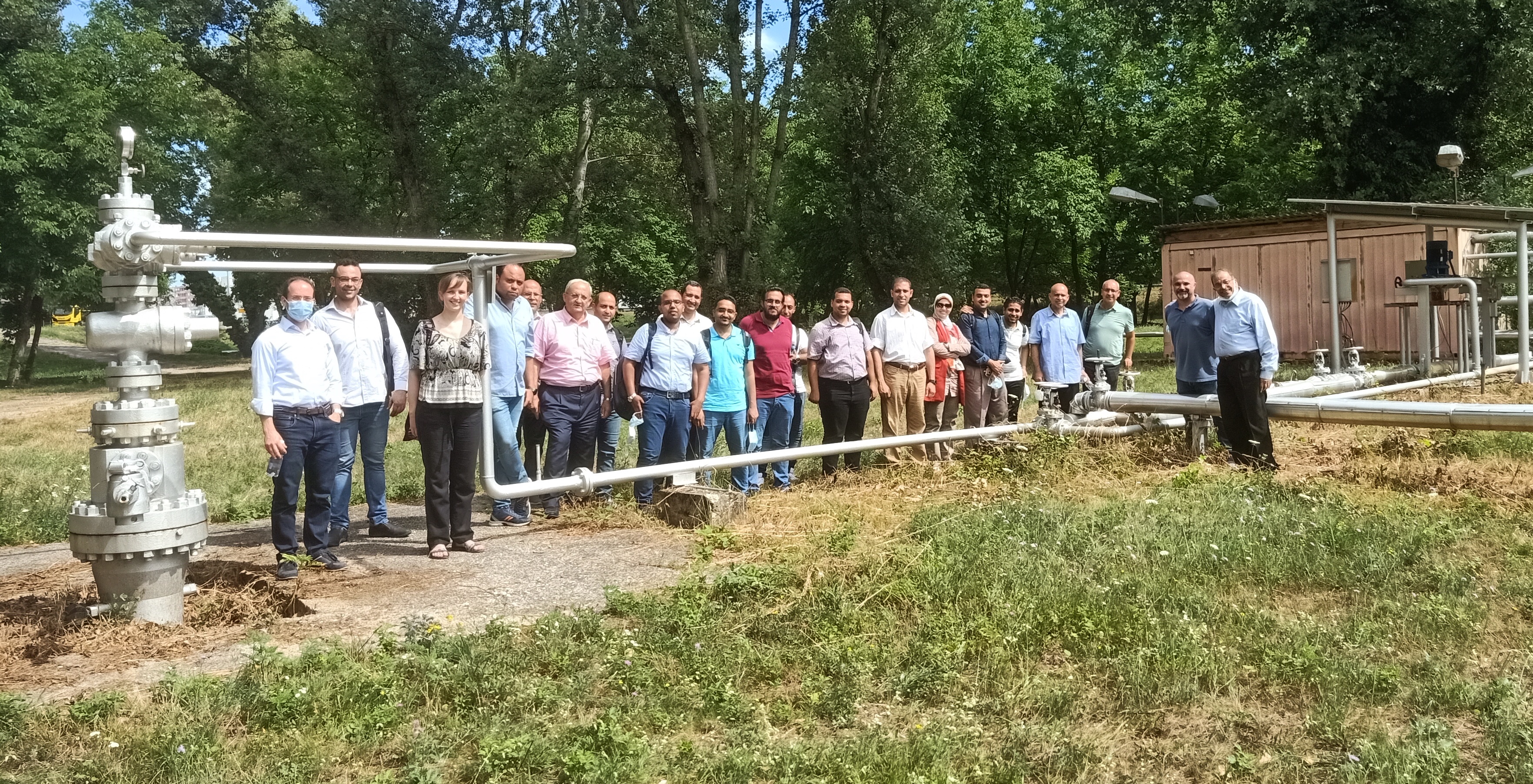University of Zagreb Training
| Location | Zagreb, Croatia |
| Host Institution | University of Zagreb |
| Date | 2021-07-12 - 2021-07-16 |
The training curated by the University of Zagreb focused on the Geological aspect of Geothermal Engineering. The training included lectures from the university professors, as well guided visits to showcase the capabilities of geothermal energy in climate control on a large commercial scale. The first visit was to the doublet geothermal well that heats an Olympic swimming pool in Zagreb and the other visit was to a geothermal well that heats a large shopping mall near the center of the city.
|
Date |
Topics |
|---|---|
|
Monday 12/07/2021 |
Deep geological reservoir systems. Differentiation according to lithotype and origin: clastic, carbonate, magmatic-metamorphic, combinations with aquifer. Depositional environment of clastic and carbonate systems, examples of potential reservoirs for geothermal brine in such systems in northern Croatia. Petrophysical properties of geothermal systems, migration through and from them, influence of geothermal gradient, heat flow and modelling of these values in geological past (problems, risks and gains of such models). Relationship between deep geothermal systems and oil&gas geological systems, importance of hydrocarbon aquifers in utilizing geothermal brine. Connection of source rock maturity and possibility of geothermal reservoir. |
|
Tuesday 13/07/2021 |
Geological model of geothermal reservoir, mapping of depth, thickness, temperature, geothermal map of individual structures and regional maps, digitalization, assessment of input data, measuring vs estimation. Mapping of the system with small and large number of available data, interpretation in the case of large data (TTI, Ro, Gt) by using palinspastic restoration. Examples of proven geothermal reservoirs in northern Croatia (Velika Ciglena, Bizovac). |
|
Wednesday 14/07/2021 |
Reflection seismic data to define geological structure and potential reservoir. Well logging data in exploratory well tied to seismic horizons to well tops. Association of geothermal systems with high electrical conductivity of the reservoir rocks. Review of electrical and widely used electromagnetic (magnetotelluric) methods. Magnetotelluric (MT) method based on natural electromagnetic field of the earth and MT sounding provides the information on the depth (thickness) of conductive layers. Combined interpretation of several geophysical methods needed to reduce ambiguity in defining the reservoir. Croatia geothermal data room – covering of geotechnical, seismic and wellbore data of Pannonian Basin. Role of the government Croatian Hydrocarbon Agency in creating a positive investment climate in a country that rationally manages its resources. The licensing process for the geothermal exploration and production and necessary project steps to produce geothermal brine. Transition strategy from traditional petroleum industry to renewable geothermal resources. Geothermal reservoir engineering basis and well testing and its similarity to oil & gas engineering. Concept of isothermal geothermal brine production according to Gringarten-Sauty model. Heat loss inside the wellbore during the brine production. |
|
Thursday 15/07/2021 |
Creating of regional geothermal gradient map from the analysis of borehole data from exploration wellbores. Determining of virgin rock temperature during drilling and exploration operations. temperature Applying Horner and Cooper-Jones methods to correct obtained raw temperature data. Revitalization of abandoned oil&gas wells to geothermal renewable resource. Procedure of the well completion with deep coaxial heat exchanger to produce heat or electricity. Modelling of heat extraction by analytical and numerical models. Influence of thermogeological parameters on heat extraction. Hydraulic design aspects of deep heat exchangers. Economic issues related to revitalization process. Examples of using revitalized oil and gas wells in the world. |
|
Friday 16/07/2021 |
Drilling operations for shallow borehole heat exchangers. Borehole heat exchangers - types and designs. Grouting – design aspects and thermal resistance-skin. Thermal response test analysis – determining thermogeological parameters of the ground. Comparison with petroleum well testing and using established principles to improve interpretation of the data. Hydraulic design aspects of shallow geothermal field – gathering systems. Heat pumps – technology and design from the aspects of efficient borehole heat exchanger design. Influence of thermogeological parameters and borehole heat exchanger grid on heating and cooling system efficiency. Long-term changes of ground temperature due to heat extraction/rejection imbalances. Utilization of infinite and finite line source models in heat transfer modelling softwares. Economic advantages of shallow geothermal systems compared to traditional heating/cooling systems. Examples – case studies from thermogeological exploration work to mechanical engineering installation and commissioning. |

